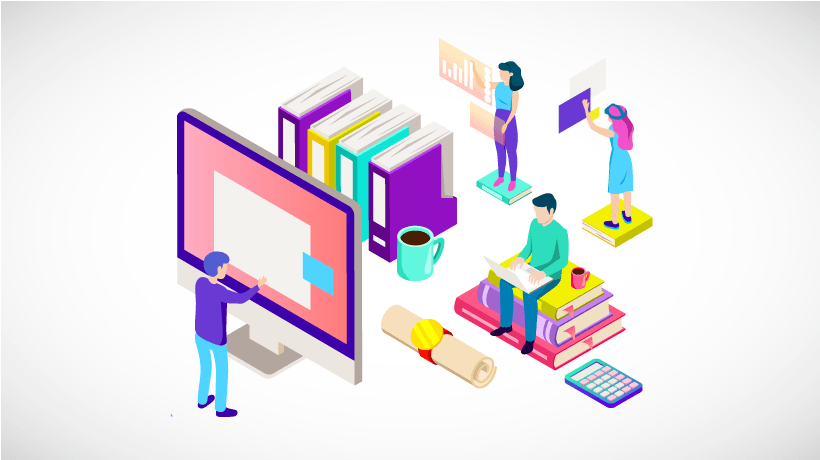Learn About The Multi-Shareable Content Object Reference Model And Its Benefits
SCORM ensures the universality of content publication and that the content can be used through any standard Learning Management System (LMS).
What Is SCORM?
SCORM is a combination of 2 main components, SCO and RM:
- Sharable Content Object (SCO)
This is a launchable resource that communicates with the run-time environment that launched it. It is the framework used to define and access information about learning content to enable easy sharing among various LMSs. - Reference Model (RM)
It is a set of rules that everyone follows, and it explains that SCORM is a standard.
It has 3 sub-specifications:
- Content packaging
It specifies how content should be packaged. - Run-time
It defines how content should be launched, and how data is communicated to an LMS. - Sequencing
It defines how a learner can navigate between portions of a course.
A SCORM package is treated as a single piece of learning material by the LMS. Every SCORM package is supposed to be independent of each other. SCORM is a great tool for content packaging and has been the go-to standard all across the world. With the rapid expansion of eLearning, multiple authors have started working on simultaneous modules and published their own SCORM modules. However, if the curriculum demands certain modules to be packaged together, then the traditional SCORM will fall short.
Here comes the concept of Multi-SCORM. As the name suggests, a Multi-SCORM Packager allows the packaging of more than one eLearning course in a single package. A Multi-SCORM Packager enables you to combine multiple eLearning projects that contain Shareable Content Objects (SCOs). Combining multiple learning projects is useful when different modules developed by many authors have to be bundled into a single package.
Here are some examples of different types of SCOs that can be combined by using a Multi-SCORM Packager:
- Adobe Captivate®/Articulate Storyline®/dominKnow's ONE®/Lectora®/iSpring® project outputs in the form of ZIP files with SCORM settings
- A quiz created using any course authoring tools
- A quiz created using Adobe® Presenter
When you publish a Multi-SCORM packaged file, a ZIP file containing all the SCOs is generated, and along with it, a manifest file is also generated. The generated ZIP file can be directly uploaded to an LMS. A Multi-SCORM Packager also automatically creates a table of contents (TOC) using the names of the individual modules to enable easy navigation.
5 Key Benefits Of Multi-SCORM
1. Accessibility
A Multi-SCORM course allows course administrators to acquire and carry out certain instructional components from any location with no reconfiguration or complicated installation. It features the technical framework for the categorization and discovery of the remote content.
2. Adaptability
The high adaptability of Multi-SCORM provides instruction customization that is based on both individual and organizational requirements. Multi-SCORM enhances adaptability in two ways: first, it helps the content producers to unite SCOs to be able to make training programs for various classes; second, it helps to compose content sequencing rules that define the sequence of the educational content as the learner progresses based on their input.
3. Affordability
Multi-SCORM is cost-effective and cuts down the time and expenses involved with delivering instruction from multiple experts.
4. Durability
Multi-SCORM, being a universally accepted standard, scores excellently when it comes to durability. SCORM, a time-tested standard, has been in use for a long time and definitely will be in use for a long time to come. It can stand up to the changes and development in the field of technology without expensive redesign, reconfiguration, and recoding. It has been using conventional technologies that are widely supported and have been accessible for a long time.
5. Interoperability
A big advantage of Multi-SCORM is interoperability. It enables consistent and easy content integration. You can acquire ready-to-use content from a variety of sources and combine them into a single package as per the needs of the learner. You don’t need any additional coding to integrate diverse content.
In short, Multi-SCORM gives all the advantage of traditional SCORM and gives the additional benefit of packaging several SCORMs together without having to change any integration level coding. In the near future, Multi-SCORM will be widely used to enhance collaboration among educators and content creators.

